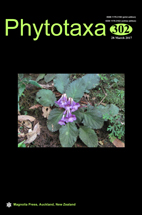Abstract
Jouvea is a dioecious genus of grasses with two species. Molecular phylogenetic analyses place it in tribe Cynodonteae, closely related to subtribes Hilariinae and Scleropogoninae, and the genera Allolepis and Sohnsia. The staminate inflorescence in Jouvea is an ordinary grass spike of spikelets, but the pistillate inflorescence is represented by a single spikelet which lacks glumes, has a thick and cylindrical rachilla, lemmas forming a tube that enclose the palea and pistil, stigmas protruding from an apical pore of this tube, and does not have lodicules. Within Cynodonteae, inflorescences reduced to a single spikelet also occur in subtribe Monanthochloinae, in which the small number of flowers of the terminal inflorescence is compensated by an increase in the number of lateral floriferous shoots. We here describe the floriferous shoot system (synflorescence) of Jouvea and compare it to other cynodonteae grasses with reduced inflorescences. Jouvea species display a high number of lateral shoots (trophotagma enrichment axes) growing from the medial and distal zones of the synflorescences. These shoots have prophyllar origins and form clusters of lateral inflorescences. The elevated number of trophotagma enrichment axes of Jouvea may be associated with the extreme reduction in the pistillate terminal inflorescence. In addition, the increase in number of spikelets by the development of prophyllar branches is a unique strategy within tribe Cynodonteae.

